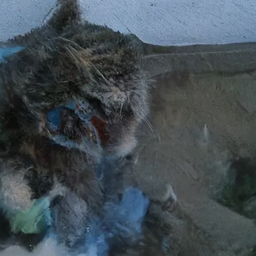模型:
google/ddpm-cat-256
 英文
英文非线性扩散概率模型(DDPM)
论文: Denoising Diffusion Probabilistic Models
作者:Jonathan Ho, Ajay Jain, Pieter Abbeel
摘要:
我们提出了使用扩散概率模型进行高质量图像合成的结果,这是一类受非平衡热力学考虑启发的潜变量模型。我们通过训练根据扩散概率模型与带有Langevin动力学的去噪分数匹配之间的新颖连接设计的加权变分边界来获得最佳结果,我们的模型自然地采用逐步有损解压缩方案,可以解释为自回归解码的推广。在无条件的CIFAR10数据集上,我们获得了9.46的Inception得分和3.17的最先进的FID得分。在256x256的LSUN上,我们获得了与ProgressiveGAN相似的样本质量。
推断
DDPM模型可以使用离散的噪声调度器,例如:
用于推断。请注意,尽管ddpm调度器产生了最高的质量,但它也花费最长时间。为了在质量和推断速度之间取得良好的平衡,您可能需要考虑使用ddim或pndm调度器。
请参阅以下代码:
# !pip install diffusers
from diffusers import DDPMPipeline, DDIMPipeline, PNDMPipeline
model_id = "google/ddpm-cat-256"
# load model and scheduler
ddpm = DDPMPipeline.from_pretrained(model_id) # you can replace DDPMPipeline with DDIMPipeline or PNDMPipeline for faster inference
# run pipeline in inference (sample random noise and denoise)
image = ddpm().images[0]
# save image
image.save("ddpm_generated_image.png")
要获取更详细的信息,请查看 official inference example
训练
如果您想训练自己的模型,请查看 official training example
样本
























